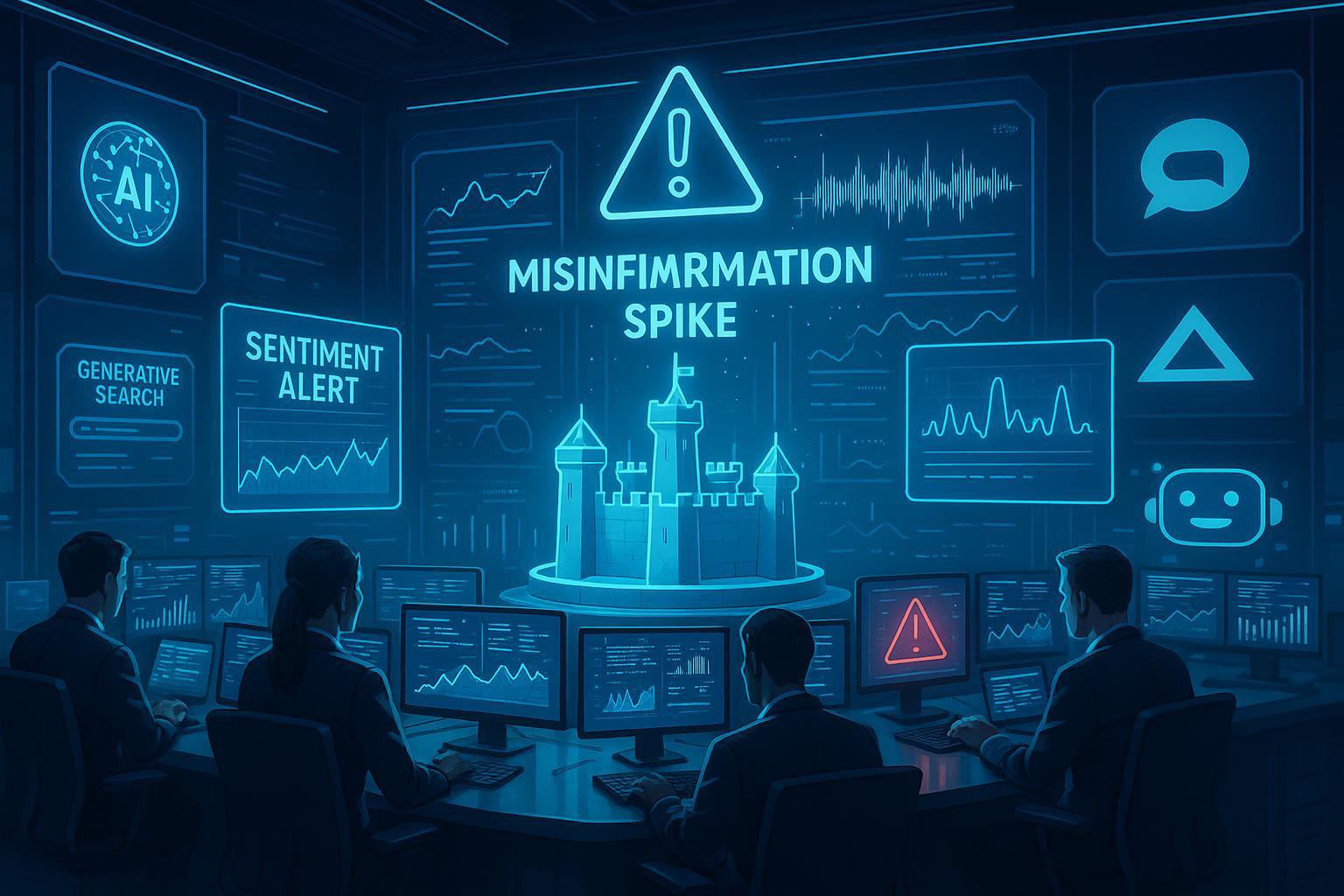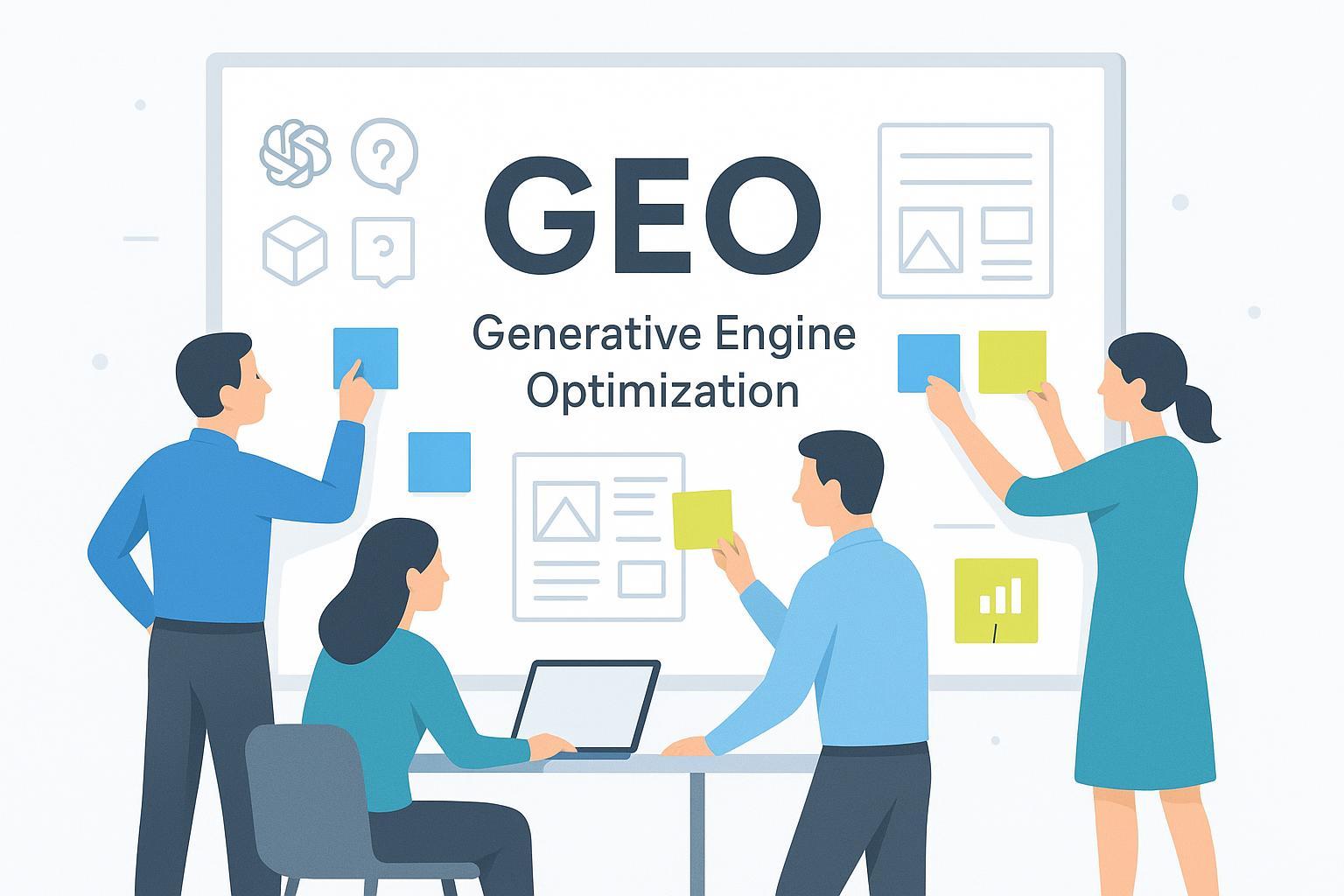AI Brand Reputation: Proactive Misinformation Management Best Practices 2025
Discover actionable 2025 best practices for proactive AI search brand reputation, misinformation monitoring, controversy response, and team workflows—with Geneo integration for enterprise safety.


By an enterprise digital reputation strategist
Introduction: Navigate the New Brand Safety Battleground
If you manage a brand’s reputation in 2025, you’re operating in a high-stakes environment where AI-generated misinformation outpaces traditional crisis cycles—and multiplies across chatbots, generative search engines, new media sites, and viral forums. This isn’t theory: with documented misinformation incidents rising 56% year-on-year and over 75% of consumers voicing concern about AI-generated falsehoods (NewsGuard, 2025), reputation managers need real, multi-layered best practices that outperform generic tool advice.
Based on current frameworks, cross-industry data, and direct use of leading monitoring platforms (including Geneo), here’s how practitioners are winning the new AI reputation war—stepwise, coordinated, and grounded in 2025 realities.
1. Rapid AI-Driven Brand Visibility & Early Warning Framework
Key Practices
- Deploy multi-platform AI monitoring: Do not rely on Google alone. Integrate monitoring across ChatGPT, Perplexity, Bing Copilot, Meta AI, and emerging chatbot search, alongside social networks and forums.
- Centralized dashboards and actionable alerts: Tools like Geneo let teams track brand mentions, citation sentiment, and narrative volatility in real time across platforms (Geneo Blog, 2025).
- Custom alert thresholds: Set incident triggers for negative sentiment spikes or policy-violating AI answers. Ensure teams get notified for coordinated misinformation attacks immediately—not after viral growth.
Steps to Implement
- Audit all platforms where AI-generated answers, summaries, or citations appear about your brand.
- Configure real-time monitoring and sentiment analysis (Geneo or equivalent).
- Test alert workflows with cross-team response simulations.
Pitfalls to Avoid
- Over-relying on manual checks.
- Ignoring smaller/upcoming AI search platforms where misinformation may propagate first.
2. Stepwise Verification & Fact-Checking Protocols
Key Practices
- Structured verification flows: Avoid knee-jerk reactions. Implement a standard playbook:
- Collect the flagged AI-generated claim, noting where and how it appears.
- Fact-check using AI-powered tools (cluster matching, source cross-validation: see Articulate, 2025).
- Document findings and potential legitimate sources before activating a response.
- Decision trees for escalation: Map out what qualifies as high-impact misinformation versus low-priority noise, so resources go where most needed.
Steps to Implement
- Assign verification responsibility (PR, SEO, legal).
- Use AI-powered fact-checking and sentiment clustering for disputed content.
- Record each incident and resolution—feeding learnings into scenario planning.
Pitfalls
- Reacting without proof, risking escalation of harmless or ambiguous content.
- Failing to document actions for legal/regulatory compliance.
3. Coordinated Crisis Communication: Team Roles & Escalation Ladders
Key Practices
- Multi-disciplinary rapid response: In 2025, effective crisis teams bridge marketing, comms, legal, and technical roles using shared dashboards and automated notifications (MarTech, 2025).
- Internal escalation ladders: Diagram routes from front-line social/SEO teams to PR leadership and legal counsel. Use clear triggers and authority hand-offs.
- Dynamic tone guidelines: Update response templates for AI-era hyper-speed cycles; adapt language for Generative AI user contexts (concise, factual, transparent).
Action Checklist
- Create crisis comm templates for generative search, chatbot, and social responses.
- Train staff on notification and chain-of-command procedures using platforms like Geneo’s team workflow tools.
- Run annual simulation drills to stress-test response.
Pitfalls
- Siloed team responsibilities.
- Outdated escalation diagrams slowing multi-channel response.
4. Search Visibility & Narrative Control
Key Practices
- SEO for remediation: Rapidly optimize owned content to elevate accurate information and push down negative AI-generated results (drawing on analysis from SEMrush and Exploding Topics, 2025).
- Counter-messaging: Launch branded and authoritative signals immediately in affected search and generative outputs. This includes publishing refutations, expert commentary, and positive brand stories that AI models favor in answer aggregation.
- Content optimization using AI feedback: Use platform suggestions (Geneo: narrative recommendations) to fine-tune content for discoverability and sentiment recovery.
Steps to Implement
- Immediate publication of factual SEO pages targeting disputed queries.
- Amplify distribution through PR and influencer partnerships where AI citation sources pull from trusted sites.
- Use monitoring results to iterate meta descriptions, schema, and conversational content.
Pitfalls
- Overlooking AI answer sources (not just SERPs).
- Reactive-only strategy; best results come from proactive narrative building.
5. Legal and PR Countermeasures in the AI Era
Key Practices
- Legal thresholds: Define the boundary for legal escalation (e.g., deepfake impersonations, synthetic endorsements, libel). Use case-by-case assessments and document harm/evidence (Stanford AI Index, 2025).
- PR recovery campaigns: Once the crisis stabilizes, implement sentiment recovery using AI-optimized messaging, transparent updates, and third-party validation (PRSA, 2025).
- Regulatory alignment: Monitor DSA, EU AI Act, and US/California regulations to ensure mitigation steps are compliant (Carnegie Endowment, 2025).
Steps to Implement
- Maintain a pre-arranged legal/PR escalation matrix.
- Document each incident outcome for regulatory/board review.
- Review AI platform policies and update your own brand safety guidelines quarterly.
Pitfalls
- Delayed legal action leading to negative precedent.
- PR campaigns lacking transparency or authenticity.
6. Predictive Analytics & Scenario Planning
Key Practices
- Proactive risk analysis: Use AI dashboard analytics to anticipate incident likelihood and business impact. Assign scores and set trigger rules (Britopian, 2025).
- Post-incident review: Every case becomes a lesson. Benchmark detection speed, recovery time, and sentiment shift, then recalibrate workflows.
Action Steps
- Integrate predictive modules (Geneo: incident likelihood, historic comparison).
- Routinely update scenario plans based on newest threat models (deepfakes, synthetic endorsements).
- Share learnings across brands, especially if managing portfolios.
Pitfalls
- One-off response: failing to iterate and institutionalize lessons.
- Lack of cross-team feedback loop.
7. Advanced Threat Models: Deepfakes, Synthetic Misinformation & Hallucination Management
Key Practices
- Recognize the unique risk profile for AI-generated content:
- Deepfakes and synthetic impersonations targeting brand leadership.
- Automated disinformation resembling legitimate campaigns.
- Chatbot hallucinations (factually inaccurate but plausible summaries).
- Combine technical, legal, and psychological interventions (DHS, 2025).
Implementation Points
- Deploy provenance tools for deepfake authentication.
- Educate frontline staff in recognition tactics and immediate flagging protocols.
Pitfalls
- Treating generative AI misinformation like legacy social virality; new tactics require dynamic playbooks.
8. Multi-Industry Application: Key Scenarios
- Enterprise & Financial Services: Audit AI model outputs, enforce human-in-the-loop review for high-stakes brand decisions (Deloitte, 2025).
- Retail & Advertising: Monitor real-time content quality, plan adaptive campaigns based on sentiment shifts (Basis, 2025).
- Healthcare & Tech: Institute strict governance and agentic AI management to counter data hallucination (World Economic Forum, 2025).
9. Continuous Improvement & Practitioner Insights
What the Best Teams Do
- Annual benchmarking: Measure detection, escalation, and recovery performance using platform analytics (60% of Forbes 100 use AI sentiment tools as of 2025 (InMoment, 2025)).
- Expert perspectives: Rely on multi-team oversight, ethical AI frameworks, and ongoing incident-driven reviews. Brian Snyder (Axicom) urges reputational stewardship as AI user behavior evolves (PRNewsOnline, 2025).
Steps to Embed
- Set quarterly review cycles, audit monitoring protocols, and update training materials using real-world incident data.
- Invite cross-functional feedback and sharply document pivots.
10. Product Integration: Geneo in Operational Practice
Geneo’s platform delivers:
- AI-driven, multi-channel brand monitoring (Google, ChatGPT, Perplexity, Bing, social, and more).
- Sentiment analytics and real-time alerts for misinformation or controversy spikes.
- Historical traceability: Access timeline of past incidents, outcomes, and optimization strategies.
- Collaborative workflows: Facilitate coordination between marketing, PR, and legal from a single dashboard.
- Content optimization recommendations: Use AI insights to strengthen narrative and remediate reputational harm.
Real-World Scenario:
A retail brand monitored its generative search visibility using Geneo, detected a misinformation spike originating in Perplexity on launch day, triggered instant alerts to both PR and legal teams, published SEO-optimized refutations, and saw a 15% sentiment recovery within a month—all tracked and benchmarked in the dashboard. (Geneo Blog, 2025).
For teams demanding comprehensive brand safety and visibility in generative AI-powered environments, Geneo provides scalable, actionable, and measurable reputation control.
Conclusion: Best Practice Execution Checklist for 2025
Here's a distilled practitioner checklist for rapid operationalization:
- Map all AI platforms where brand mentions surface (update quarterly).
- Deploy multi-channel monitoring with real-time sentiment alerts.
- Establish clear verification and escalation protocols (document rigorously).
- Coordinate cross-team crisis comms with up-to-date templates.
- Optimize content for narrative remediation and SEO in affected AI/search channels.
- Know legal/PR thresholds and align mitigation with regulatory dynamics.
- Integrate predictive analytics and learning loops for continuous improvement.
- Use domain-specific workflows for your industry (benchmark routinely).
Stay vigilant, iterate aggressively, and leverage AI-powered tools that allow you to act before crises become headlines. In the arms race against AI-powered misinformation, only proactive, team-integrated operations win—and only brands equipped for real-time action remain trusted in the eyes of the 2025 consumer.
Discover how Geneo can future-proof your reputation strategies for AI search and generative content environments: Explore Geneo’s platform and free trial.





